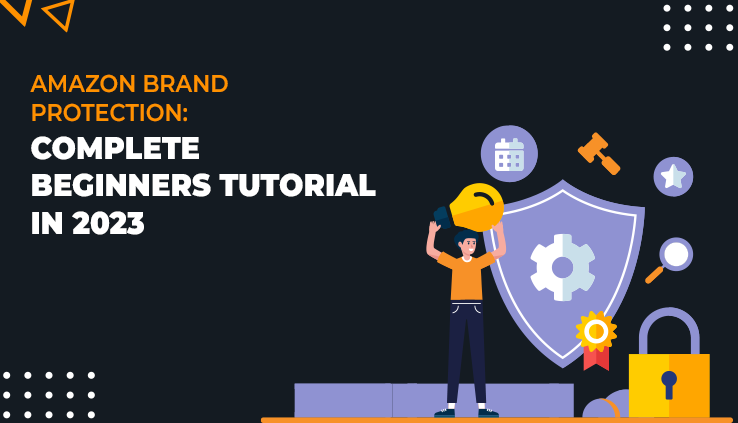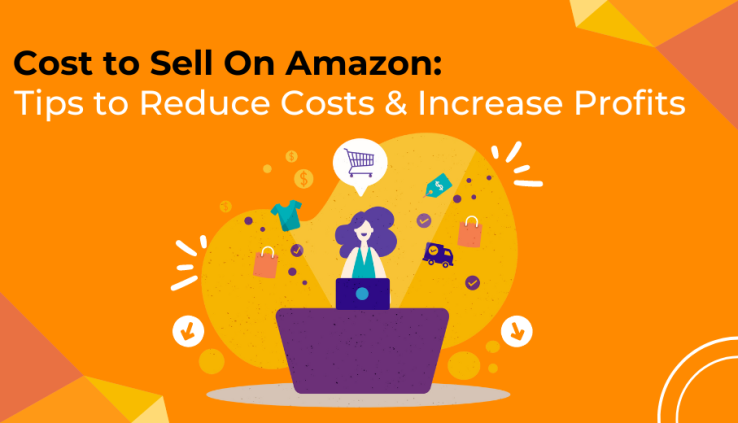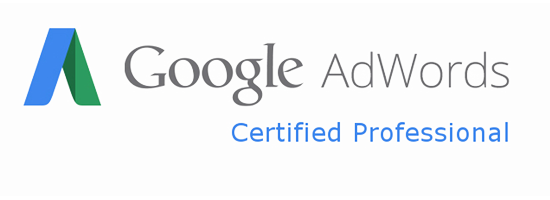In today’s digital landscape, e-commerce has become integral to our daily lives. With the rise of online shopping platforms, Amazon has emerged as a frontrunner, connecting millions of buyers and sellers worldwide. However, the tremendous success of Amazon has also attracted a growing number of counterfeiters and unauthorized sellers, posing a significant threat to the platform’s integrity and the interests of legitimate brand owners. Amazon has implemented robust brand protection measures to combat this issue and ensure a safe and reliable shopping experience.
This tutorial will serve as your comprehensive guide to navigating the ever-changing e-commerce landscape and protecting your brand’s integrity on Amazon. So let’s dive in and empower ourselves with the knowledge to secure our brands in the dynamic world of online commerce.
Why is it Essential to Implement Amazon Brand Protection?
Implementing Amazon brand protection is of utmost importance for several compelling reasons. Let’s explore some key reasons why brand protection on Amazon is crucial:
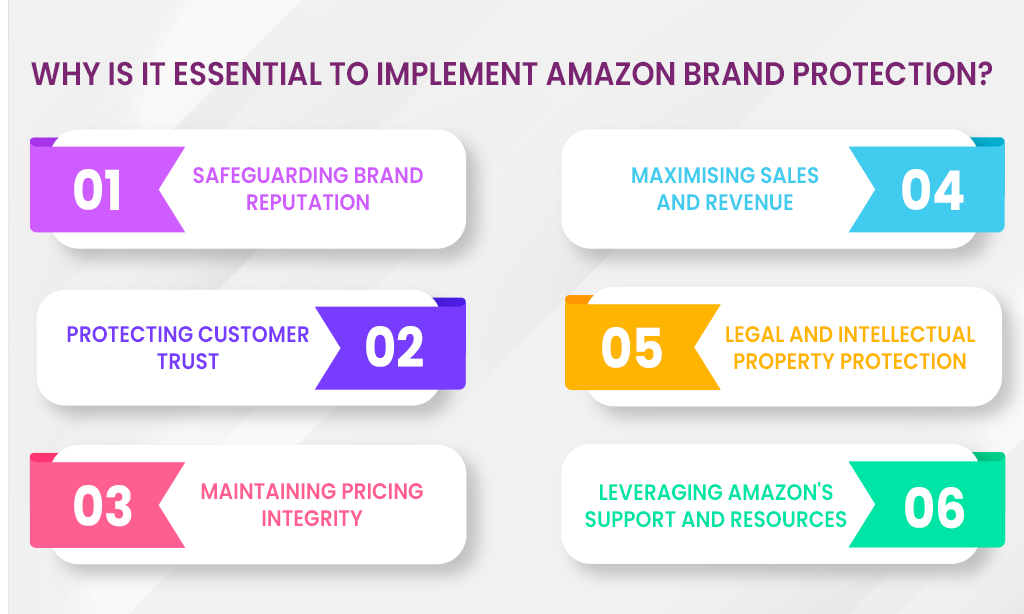
Safeguarding Brand Reputation
Your brand’s reputation is one of your most valuable assets. Counterfeiters and unauthorized sellers can damage your brand’s reputation by selling inferior or counterfeit products under your brand name. By implementing brand protection measures on Amazon, you can prevent such unauthorized activities, maintain control over your brand image, and ensure that customers receive genuine products that meet your brand’s quality standards.
Protecting Customer Trust
Trust is the foundation of successful e-commerce. Customers who shop on Amazon expect to receive authentic products from trustworthy brands. Counterfeit or poor-quality products not only disappoint customers but can also pose safety risks. Protecting your brand on Amazon demonstrates your commitment to customer satisfaction, fostering trust, and encouraging repeat business.
Maintaining Pricing Integrity
Unauthorized sellers often manipulate prices, undercutting authorized sellers and diminishing your brand’s value perception. Implementing brand protection measures allows you to regulate pricing and maintain consistency across the Amazon marketplace, ensuring fair competition and protecting your brand’s pricing integrity.
Maximizing Sales And Revenue
When your brand is protected on Amazon, you can better control product distribution and prevent unauthorized sellers from diluting your sales channels. Eliminating counterfeit or unauthorized products creates a level playing field for authorized sellers, increasing the likelihood of sales and maximizing your brand’s revenue potential.
Legal And Intellectual Property Protection
Counterfeit and unauthorized activities on Amazon can infringe upon your intellectual property rights, including trademarks, copyrights, and patents. By proactively implementing brand protection measures, you can enforce your legal rights, act appropriately against infringers, and protect your brand’s unique identity and innovations.
Leveraging Amazon’s Support And Resources
Amazon provides various tools, programs, and resources to assist brand owners in protecting their intellectual property rights. By actively engaging in brand protection efforts, you can leverage these resources and collaborate with Amazon to address unauthorized activities effectively.
Overall, implementing brand protection on Amazon is essential to preserve your brand’s reputation, maintain customer trust, ensure fair competition, maximize sales and revenue, protect your intellectual property, and take advantage of the support offered by Amazon. By safeguarding your brand on the platform, you position yourself for long-term success in the competitive world of e-commerce.
What Does an Amazon Protection Plan Entail?
An Amazon protection plan typically encompasses a range of strategies, tools, and actions to safeguard your brand and intellectual property rights on the Amazon marketplace. While specific approaches may vary depending on the brand’s needs and the nature of the products, here are some standard components of an Amazon protection plan:
Trademark Registration
Registering your brand’s trademarks with the relevant intellectual property offices strengthens your legal rights and provides a foundation for enforcing your brand on Amazon. It enables you to participate in Amazon’s Brand Registry program and access additional brand protection tools and features.
Amazon Brand Registry
Enrolling in Amazon’s Brand Registry program gives you enhanced control over your brand’s presence on the platform. It allows you to create a trusted brand profile, access powerful search and reporting tools, and utilize advanced protection mechanisms to detect and report potential infringements.
Monitoring and Detection
Implementing robust monitoring and detection mechanisms is vital for identifying unauthorized sellers, counterfeit products, and intellectual property infringements. This involves using specialized software, services, or professional monitoring agencies to regularly scan the Amazon marketplace for suspicious activities related to your brand.
Reporting and Enforcement
Once unauthorized activities or intellectual property infringements are detected, promptly reporting them to Amazon is essential. This involves submitting accurate and detailed reports through Amazon’s reporting systems, highlighting the specific violations and providing supporting evidence. Amazon’s enforcement teams then review the reports and take appropriate action against the infringing listings or sellers.
Proactive Listing Optimization
Optimizing your product listings with compelling images, accurate descriptions, and relevant keywords can help differentiate your authentic products from counterfeits. Clear and detailed product information helps customers make informed purchasing decisions while deterring unauthorized sellers from replicating your listings.
Authorized Distribution Networks
Establishing a network of authorized distributors and sellers can help maintain control over product distribution and minimize the risk of unauthorized sellers infiltrating the marketplace. Carefully selecting and managing authorized partners can ensure consistent product quality and pricing integrity.
Customer Education
Educating customers about the importance of purchasing products only from authorized sellers can help combat the spread of counterfeits. Through packaging inserts, product documentation, and online messaging, you can inform customers about the risks associated with counterfeit products and guide them to legitimate sources.
Legal Actions
In cases of persistent and severe infringement, it may be necessary to pursue legal actions against counterfeiters or unauthorized sellers. This involves working with intellectual property attorneys to enforce your rights through cease and desist letters, litigation, or other legal means.
It’s important to note that brand protection on Amazon is an ongoing and dynamic process. Regular monitoring, adaptation to new threats, and collaboration with Amazon’s brand protection programs are crucial to maintaining a solid defense against unauthorized activities and protecting your brand’s integrity on the platform.
Three Levels of Brand Protection for Amazon
Regarding brand protection on Amazon, brands can implement three levels to enhance their protection efforts. These levels encompass different strategies and approaches to address the varying degrees of threat and risk. Here are the three levels of brand protection for Amazon:
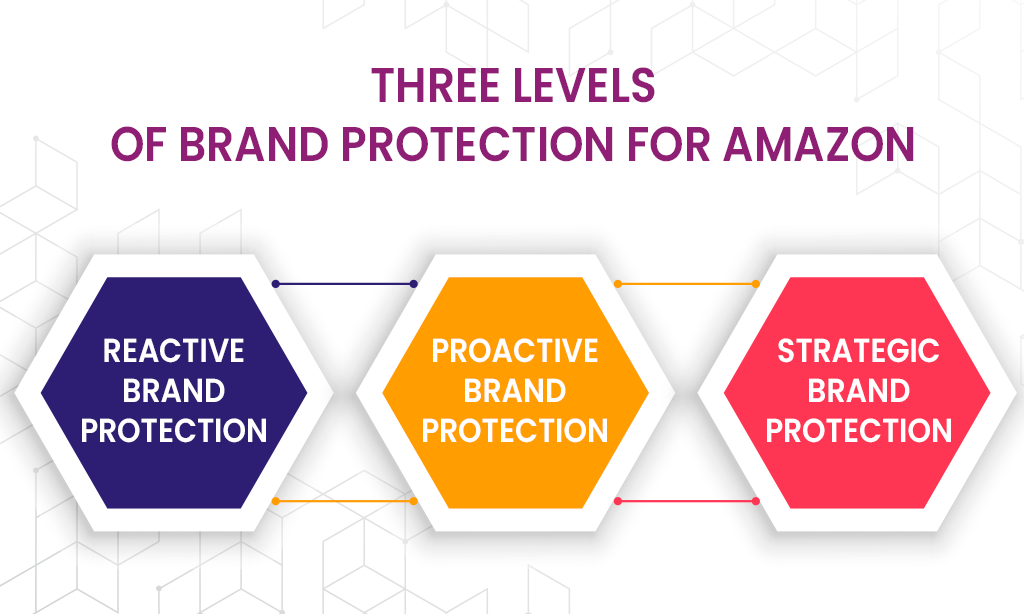
- Reactive Brand Protection: This level involves taking action after detecting brand infringements and unauthorized activities on Amazon. It includes monitoring, reporting violations, and working with Amazon’s enforcement teams to remove infringing listings or sellers.
- Proactive Brand Protection: Proactive brand protection focuses on preventing unauthorized activities before they occur. It includes trademark registration, Brand Registry enrollment, intellectual property monitoring, establishing authorized distribution networks, and optimizing product listings to deter counterfeits.
- Strategic Brand Protection: This level combines reactive and proactive measures with a strategic approach. It involves in-depth brand monitoring and intelligence, collaborative partnerships with Amazon, legal actions and enforcement against persistent infringers, and continuous improvement and adaptation of brand protection strategies.
Moving through these levels allows brands to strengthen their defences, mitigate risks, and protect their reputation, customer trust, and revenue on the Amazon marketplace.
Bonus Pointers for Amazon Brand Protection Benefits
Build a Strong Brand Presences
Establish a strong brand presence on Amazon by creating detailed and compelling product listings, utilizing high-quality product images, and consistently delivering exceptional customer service. A well-established brand presence makes it easier for customers to identify authentic products and deters unauthorized sellers.
Educate Your Customers
Proactively educate your customers about the risks of purchasing from unauthorized sellers and the importance of buying from authorized sources. Include messaging on product packaging, inserts, and marketing materials to reinforce the authenticity and trustworthiness of your brand.
Utilize Product Serialization or Unique Identifiers
Consider implementing product serialization or unique identifiers on your products, such as QR codes or serial numbers. This allows customers to verify your products’ authenticity and helps identify counterfeits.
Monitor Customer Feedback and Reviews
Regularly monitor customer feedback and reviews for signs of counterfeit or unauthorized products. Promptly address customer concerns or issues to demonstrate your commitment to quality and customer satisfaction.
Enforce MAP (Minimum Advertised Price) Policies
Implement Minimum Advertised Price policies to maintain pricing integrity across all sales channels, including Amazon. Enforcing MAP policies helps prevent price erosion and discourages unauthorized sellers from undercutting your authorized distribution network.
Conduct Test Purchases and Quality Checks
Conduct test purchases from Amazon sellers to verify the authenticity and quality of the products sold. This helps identify counterfeit or substandard products and appropriate actions against unauthorised sellers.
Stay Updated on Amazon’s Policies and Programs
Keep abreast of Amazon’s policies, programs, and tools related to brand protection. Regularly review and understand the changes and updates to effectively leverage the available resources for brand protection.
Collaborate with Legal Professionals
Work with intellectual property attorneys specializing in e-commerce and brand protection. They can provide guidance on legal strategies, help enforce intellectual property rights, and support you in taking appropriate legal actions against infringers.
Remember, brand protection is an ongoing process that requires continuous monitoring, adaptation, and collaboration with Amazon and relevant stakeholders. By implementing these bonus pointers, you can strengthen your brand protection efforts and ensure your brand’s long-term success and integrity on Amazon.
Summing up
Congratulations! You have reached the end of the complete beginner’s tutorial on Amazon Brand Protection in 2023. Throughout this tutorial, we have covered the importance of brand protection on Amazon and provided insights and strategies to help beginners implement effective brand protection measures.
By implementing the knowledge gained from this tutorial, you are now equipped with a solid foundation to establish a robust brand protection framework on Amazon. Remember, brand protection is an ongoing journey that requires vigilance, adaptation, and collaboration with Amazon and relevant stakeholders. Stay proactive, monitor the marketplace, and promptly address infringements or unauthorized activities to safeguard your brand’s integrity. Connect with HR Tech services to boost your Amazon brand protection and use other additional services.

